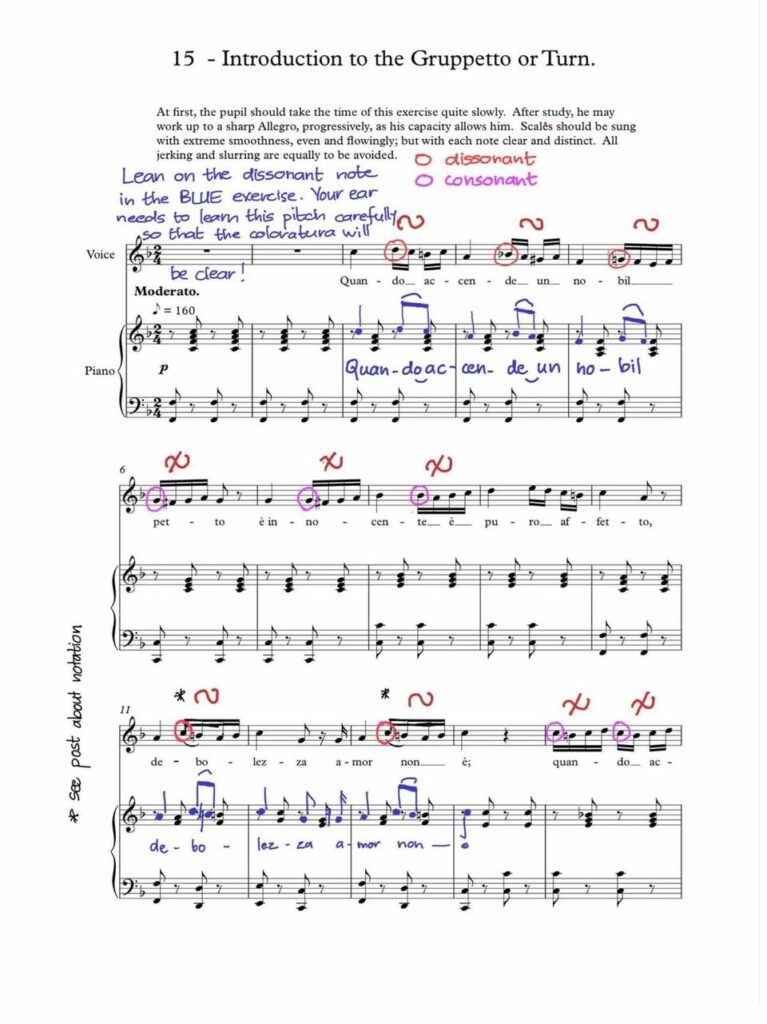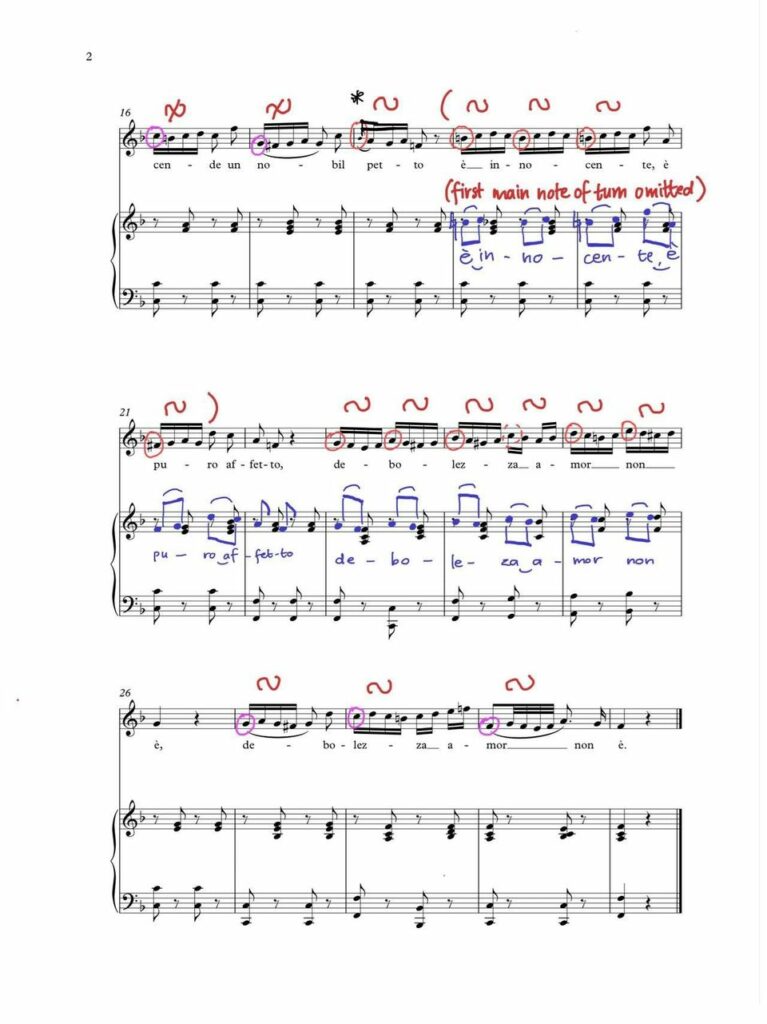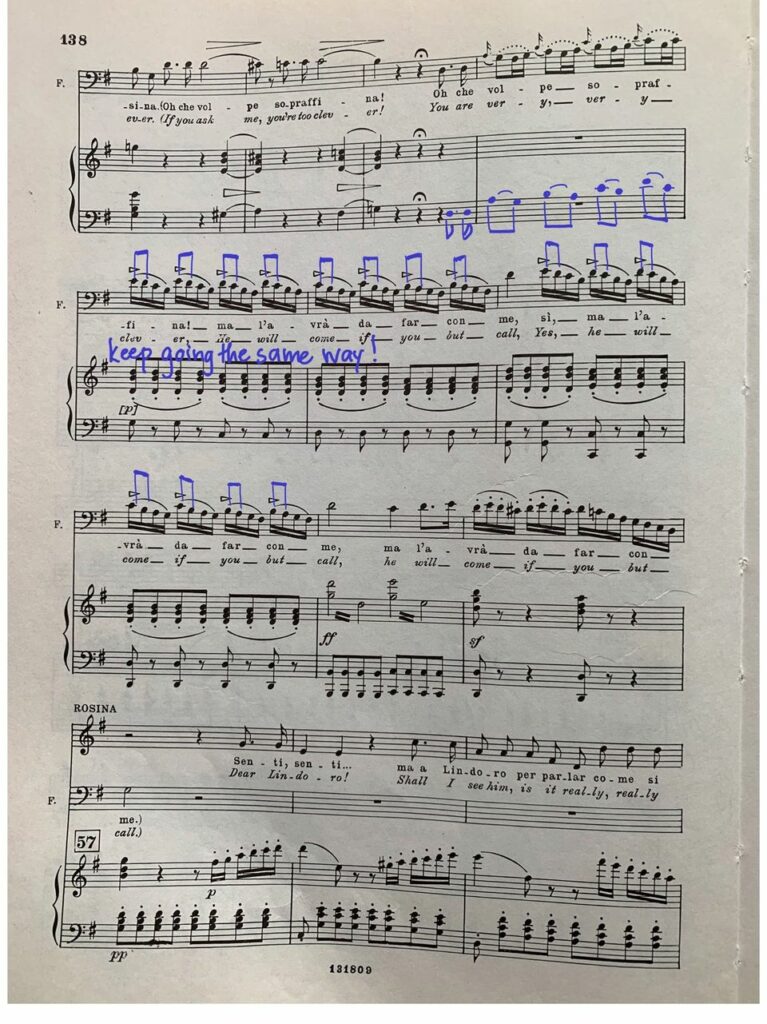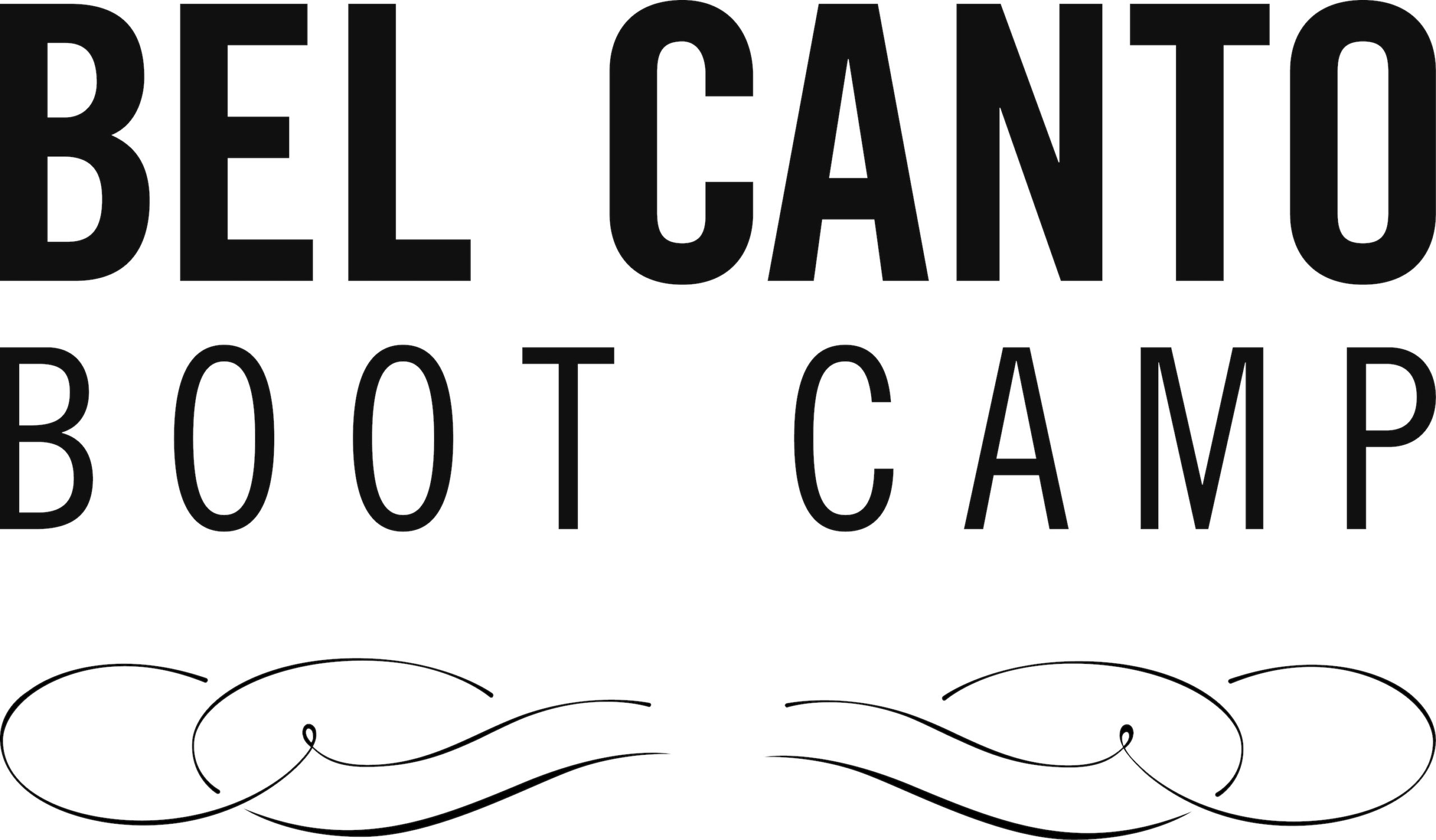Preparation for the turn, but also super important practice in itself since the patterns we find here are strewn all over the bel canto repertoire.
The turn (after passing tones Lesson 7, appoggiatura and acciaccatura Lesson 8, and mordent Lesson 9) is the next unit of pitches we study in our quest to train our voices to move nimbly and learn about ornamentation all at the same time.
As always remember that the first step to singing fast is singing slowly. We talked about this a lot on both days of Lesson 7. There is no reason to sing this lesson fast today. It is Saturday! Take it easy!
Remember Two Note Tuesday and legato tones and semitones? If you can do those, you can sing a legato turn!
A turn is constructed of five notes:
main note/upper neighbor/main note/lower neighbor/main note.
An inverted turn flips the pattern:
main note/lower neighbor/main note/upper neighbor/main note.
As you sing the lesson slowly (and legato needless to say), think about the patterns harmonically. Is the first note of the group of sixteenths consonant or dissonant? Does it belong to the harmony or is it an upper or lower neighbor (dissonant or appoggiatura)?
Do you see the “little notes” on “amor NON è” and “PETto”? It is still a simple group of four sixteenths. Composers wrote it this way to draw the eye to the consonant note. It helps you see what I described above. You will never see this notation if the first note of the group is not a dissonant (appoggiatura). You see this same notation in the Rosina/Figaro duet in Il barbiere di Siviglia. All of those groups that start with the “little note” are regular groups of 4 sixteenths.
Try the exercise in blue on the practice sheet to solidify these dissonant pitches in your ear. I am amazed at how many people do not know if the first note in their groups of sixteenths are consonant or dissonant! If your ear is confused, you can bet your bottom dollar that your voice will be too!
I apply the same practice method to “Dunque io son.” I’m sure you will find this pattern in your own repertoire. Keep reviewing how the pattern of the turn feels when the upper neighbor (appoggiatura) resides on a beat. The first part of this duet is notoriously sung sloppily. We can change that!




